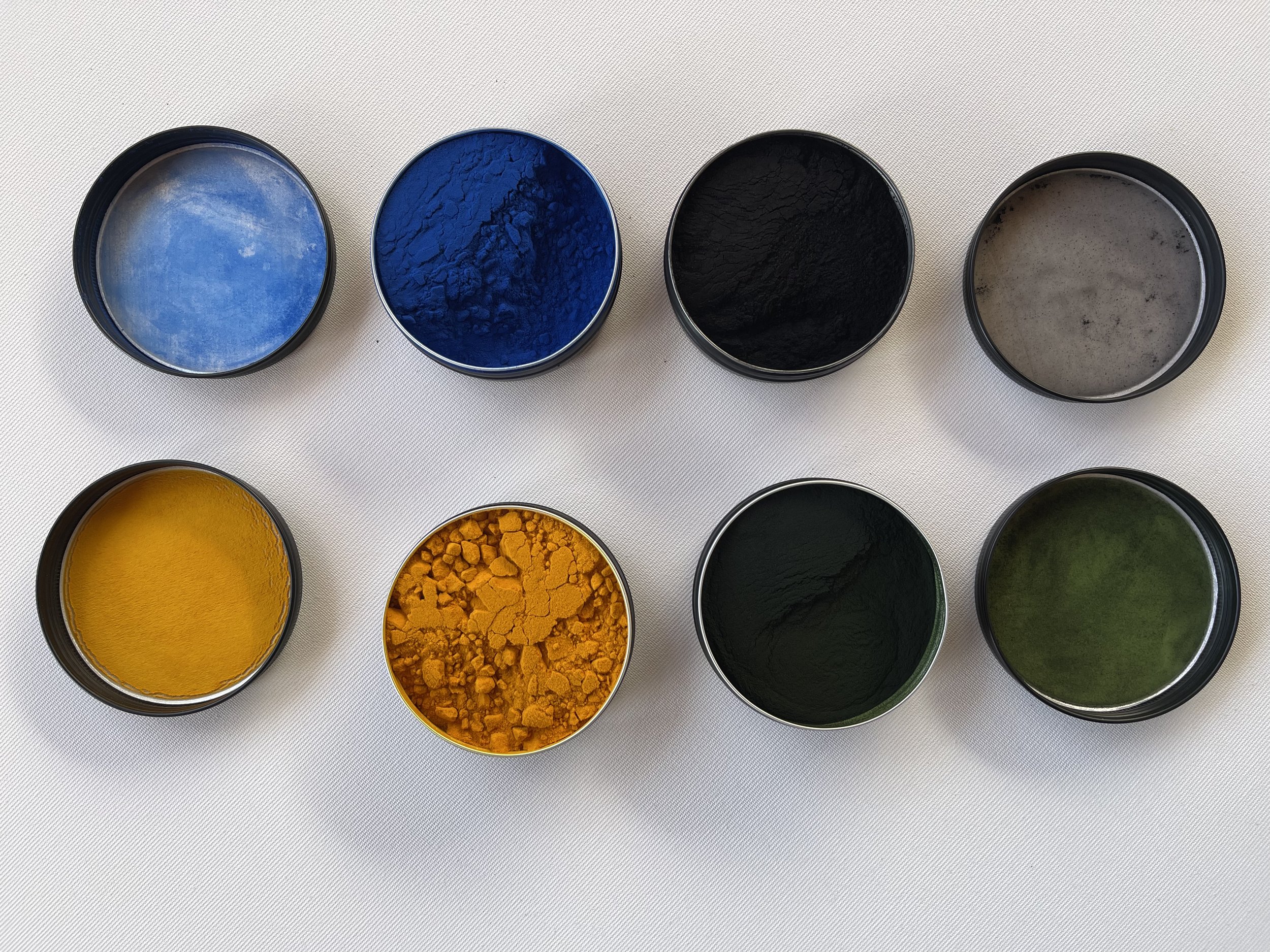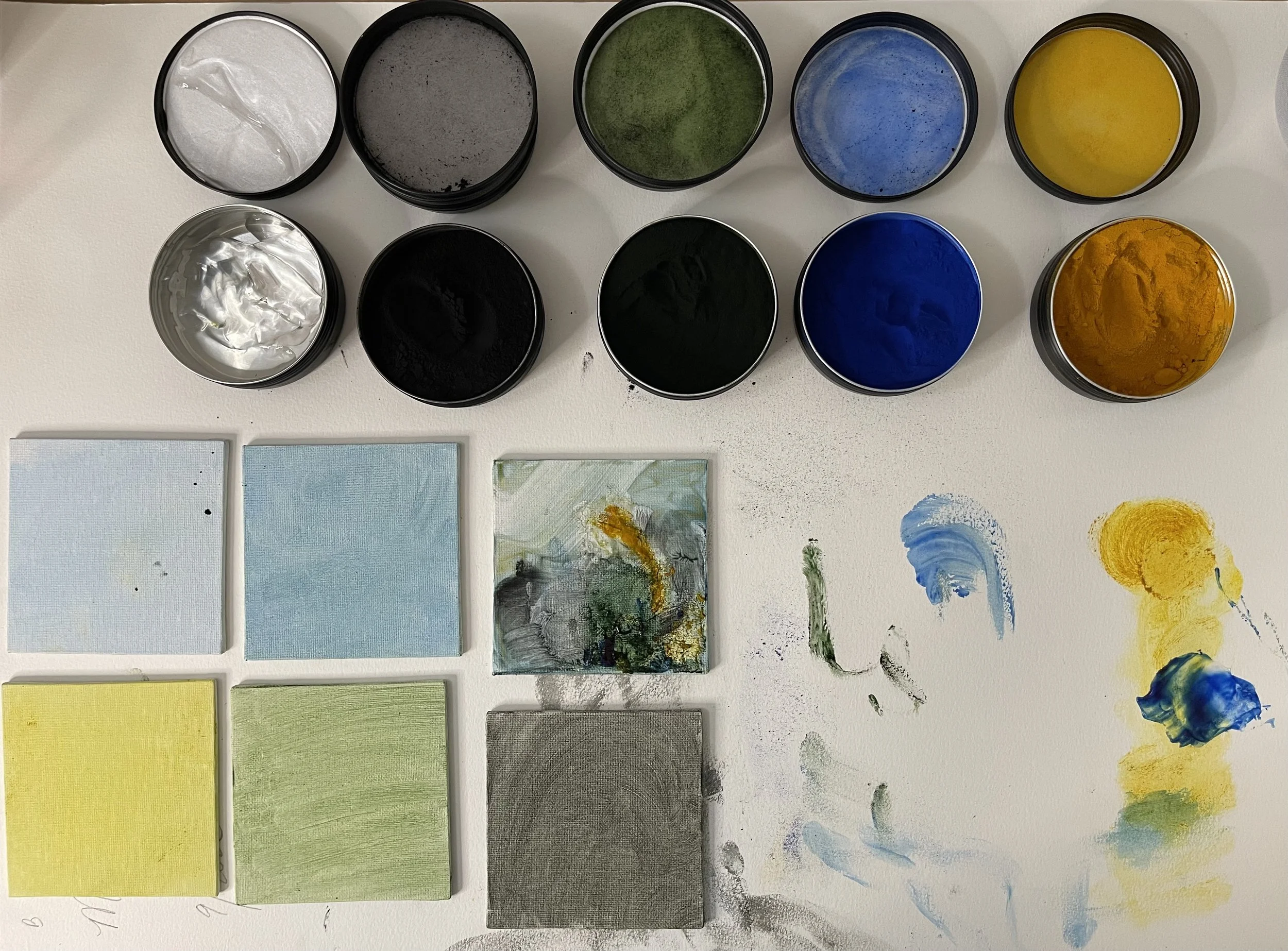Make your school more sustainable, use Placrylic Paint to create art
Eco Paints
After studying thousands of plants, painter, chemist, and placrylic inventor, artist hana created 200+ paintings to test and formulate eight sustainable plant pigments that, when combined with the patented plant gel formulation, produce eight natural yet vibrant colours with excellent lightfastness
-
Placrylic™ is a patented sustainable eco plant paint that, like behaves like traditional oil paint in that artists can work in layers. However, unlike oil paint, which typically requires titanium white paint and has a negative impact on ocean chemistry when washed down the drain, placrylic is 100% titanium free, marine friendly, and safe for use by artists and designers
The Placrylic Gel medium is 100% plants in a gel emulsion. Fluid from several plants are extracted and worked into a gel emulsion, ready for mixing with placrylic plant pigments
-
Eco Yellow Pigment is derived from a combination of edible hardy plants with high curcumin content, and it only takes a small amount of the yellow pigment to generate vibrant yellow hues
-
Eco Green Pigment is made from a combination of marine plants which are incredibly tough and can grow in the most severe climates, making it a very sustainable alternative; when eco green is combined with placrylic gel medium, you get a placrylic green that falls between viridian green and racing green. Because it is a natural colour, when you work with it, you get a genuine green.
-
Eco Brown Pigment is made from a combination of edible brown root plants that have been thoroughly dried and turned into a pigment powder form, which is combined with placrylic gel medium to make eco brown placrylic paint
-
Eco White Pigment is created by combining pigment powder from several edible plants with placrylic gel medium. The white paint is transparent and excellent for blending. To achieve opaque white, combine pigment and gel in a 1:1 ratio.
-
Eco Black Pigment is made from coconut shells that have been thoroughly dried and turned into a pigment powder form, which is then combined with placrylic gel medium to make eco black placrylic paint
-
Eco Blue Pigment is made from a combination of blue pigmented plants and flowers that have been thoroughly dried and turned into a pigment powder form, which is then combined with placrylic gel medium to make eco blue placrylic paint
-
Eco Red Pigment is made from a combination of red pigmented plants that have been thoroughly dried and turned into a pigment powder form, which is combined with placrylic gel medium to make eco red placrylic paint
-
Eco Pink Pigment is made from a combination of edible pink fruits that have been thoroughly dried and turned into a pigment powder form, which is combined with placrylic gel medium to make eco pink placrylic paint
Placrylic Paint is made using plant pigments, derived sustainably from food waste, dried plant waste, pest plants and hardy plants, some of the oldest recorded in history, that thrive in harsh conditions
Placrylic Paint is now part of the permanent library archive at UAL, London College of Communication
‘‘I whole-heartedly support the ideas behind Placrylic’’ - Craig Horsfall, Studio Manager Camberwell College of the Arts
Plant Paint
Placrylic is a patented artist paint invented by English Painter and Chemist, artist hana. Placrylic paint is made using plant pigments, derived sustainably from food waste, dried plant waste, pest plants and hardy plants that thrive in harsh conditions.
Placrylic™ behaves like traditional oil paint in that artists can work in layers. However, unlike oil paint, which typical requires titanium white paint and has a negative impact on ocean chemistry when washed down the drain, placrylic is 100% titanium free, marine friendly, and safe for use by artists
Placrylic behaves like acrylic, in that it is fast drying, hardens when dry, however unlike acrylic, which also releases cancer causing chemicals like formaldehyde into the air, it contains zero plastic.
Placrylic pigments are extracted from the leaves of edible plants
Acrylic paint, a thermoplastic is typically made by mixing earth pigments into a synthetic polymer emulsion. Placrylic, a plant paint is created by combining plant pigments with a 100% plant emulsion
In the 1960s, artists began to use a range of new paints that changed the possibilities of painting, Andy Warhol used acrylic, a plastic synthetic polymer paint to create 32 canvas paintings of Campbell soup cans and David Hockney made extensive use of acrylic paint because he felt that a fast-drying substance was more suited to depicting the hot, dry landscapes of California than traditional oil paints
Both Hockney and Warhol, two brilliant painters, put their trust in paint manufacturers, who are obligated to guarantee the safety of chemicals employed by artists.
60 years on, there is scientific evidence about the negative impact of acrylic paint, which is essentially liquid plastic. When washed down the drain and into the ocean, acrylic, affects ocean chemistry and kills some sea plants and species of fish.
Artists and art lovers use acrylic paint every day to create paintings that evoke energy and beauty, paintings that heal, tell a story, or shed light on important issues we face in our current world
Because of its versatility and vibrant colour possibilities, acrylic paint is beloved by certain artists and art enthusiasts who are unaware of its negative environmental effects.
In 2020, English Painter and Chemist, artist hana invented the brand-new medium Placrylic for artists, that addresses the climate and health concerns modern artists are worried about
Placrylic is currently used by hundreds of highly sought-after artists from many countries including the United Kingdom, USA, Canada, Germany, Italy, Israel, Nigeria, South Korea, Sweden, Belgium and more
Placrylic is a fast-drying paint made entirely of plants
Among seasoned art collectors the term, ‘acrylic shame’ is used in some circles who would walk away from a painting if it was made using acrylic. Some professional artists who are aware of the environmental concerns are so ashamed of using liquid plastic to paint that they have resorted to calling their acrylic work mixed media, the question is, how will art restorers be able to correctly restore liquid plastic paintings if work descriptions are not accurate?
The most accurate description of acrylic paint as Andy Warhol quite rightly described the Campbell Soup Paintings, is synthetic polymer, now that you understand that acrylic Is liquid plastic and the correct scientific name for acrylic is synthetic polymer, you are ready to understand what placrylic is. Placrylic is a plant paint
Painters are making art using placrylic, a natural plant-based paint that behaves similar to acrylic, fast-drying, hardens when dry, with vibrant colours, contains zero plastic and does not release cancer causing chemicals like formaldehyde into the air
The future of painting looks bright
Placrylic™ | plant paint
You can use Placrylic™ on
Paper
Linen Fabric
Cotton Fabric
Linen Canvases
Cotton Canvases
Wooden Surfaces (untreated)
SCHOOLS USING PLACRYLIC
The Perse Upper School, Cambridge
•
Queens College, London
•
Camberwell College of the Arts
•
The Perse Upper School, Cambridge • Queens College, London • Camberwell College of the Arts •





